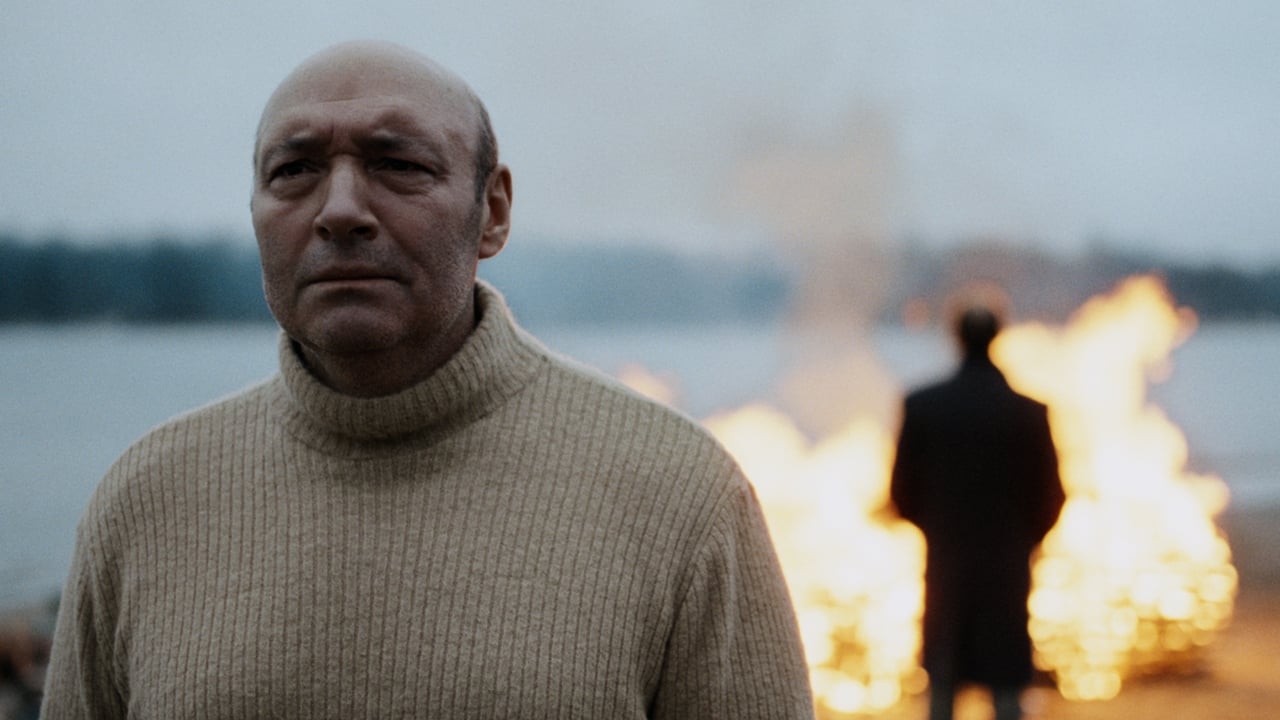By Chlotrudis Independent Film Society
Rating: 4 cats
Director: Aleksei Fedorchenko
Starring: Igor Sergeev | Yuliya Aug | Yurly Tsurilo

Country: russia
Year: 2011
Running time: 75
IMDB: http://www.imdb.com/title/tt1693830/
Jason says: “SILENT SOULS is an art-house movie, more obviously filled with more symbol than story; it’s deliberately oblique at times. In many cases, movies like that want more from their audiences than they’re willing to give, but this one does a good job of laying out the knowledge needed to interpret it. It’s worth the effort.
“Aist (Igor Sergeev) is a 40-year-old resident in the town of Neya with more interest than some in his Merjan heritage, explaining to us how Merja was a Finnish region that Russia absorbed centuries ago. His people, he explains to us, are quiet and stoical, which explains why there is relatively little wailing when his friend and co-worker Miron (Yuriy Tsurilo) tells him that wife Tanya (Yuliya Aug) has died, and he would like Aist’s help with the traditional Merjan funerary rites. This involves wrapping her and driving back to her home village so she can be cremated.
“Screenwriter Denis Osokin and director Aleksei Fedorchenko don’t play particularly coy here; when a road movie opens with a shot of two squawking birds in a cage, it’s a pretty clear signal to the people in the audience that they should pay as much attention to background as the characters, because that’s where a lot of information is going to be found, even if it is metaphorically encoded. It’s also not long before we start getting a lot of narration that is likely lifted directly from Aist Sergeyev’s short novel The Buntings, and while it can be bad form for a movie to lean too heavily on that, it’s more tolerable
than usual here, as Aist’s words are less frequently telling the story than describing Merjan tradition. Some of that winds up just
being memorable trivia (go ahead, try and forget what Merjans do on their wedding day), while other bits are information helpful in understanding what’s going on visually.
“For instance, Aist speaks a great deal about how central water and rivers are to their traditional beliefs, but much of the movie is spent traveling over bridges – things designed to separate them from the water, and thus the truth about their lives. It’s an obvious contrast to Aist’s flashbacks of he and his father; then, they’re directly in contact with the water – either in a boat or walking on the frozen river. That’s not the only trick Fedorchenko has up his sleeve; he often heightens how these men don’t display their emotions with sustained shots from the back seat of the car where we can’t even try to read something into the characters’ faces, or having Aist drift off into flashback as Morin shares memories (as one does on this journey) that sound intimate but are also surprisingly impersonal.
“Given that there’s such an emphasis on stoicism and maybe watching the background as much as the characters, the cat must work with a certain amount of subtlety, and they manage this well enough. Neither Sergeev nor Tsurilo ever emotes strongly, although they do a good enough job getting who each is across. They are still fairly anonymous in some ways by the end, but that’s part of their tragedy.
“SILENT SOULS has some issues – the end is a bit too artsy-clever, and the way women are treated as secondary is too pointedly done to wind up saying so little. It’s a movie that almost requires dissection as opposed to immediate gratification, and thankfully gives the audience the tools to do so. 4 cats
“Seen 10 October 2011 in the Brattle Theatre (CineCaché)”
